Dry grass crunched underfoot as the old grizzly searched for food. Her nostrils flared and her nose twitched as she tested her surroundings for anything out of the ordinary.
It was hot and dry. It was July, 2024.
Like all animals, bears experience their environment with all of their senses, but for mammals like this grizzly bear, smell may be the most important. Maybe she’ll pick up the tasty odour of a carcass, or some ripening berries may alert her to a potential feast. Or perhaps there is danger on the wind. Male grizzlies are not above killing cubs so that the female will go into estrous (also known as “heat”) and become available for breeding.
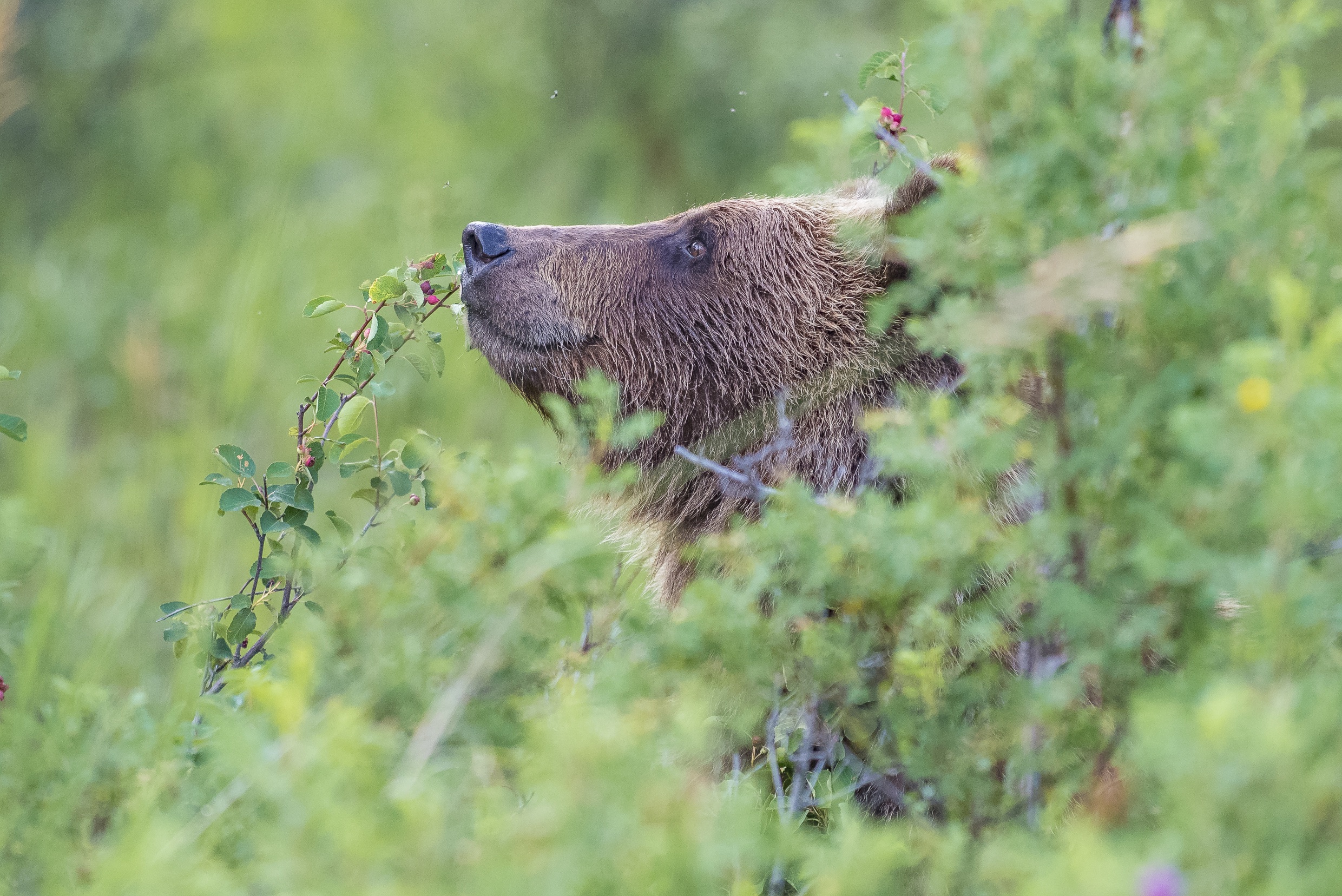
Looking back over her shoulder, (past the radio collar on her neck), the old grizzly was reassured to see that her two yearling cubs were following close behind.
Follicle the leader
How animals make habitat decisions—where to look for food and water, avoid danger, or take shelter— is often studied by scientists. Radio collars represent one method, but they aren’t the only tool available. In 2014, to find out how grizzly bears and black bears use the landscape, biologists collected bears’ DNA with barbed wire hair snags, set up around Jasper National Park and surrounding crown land.
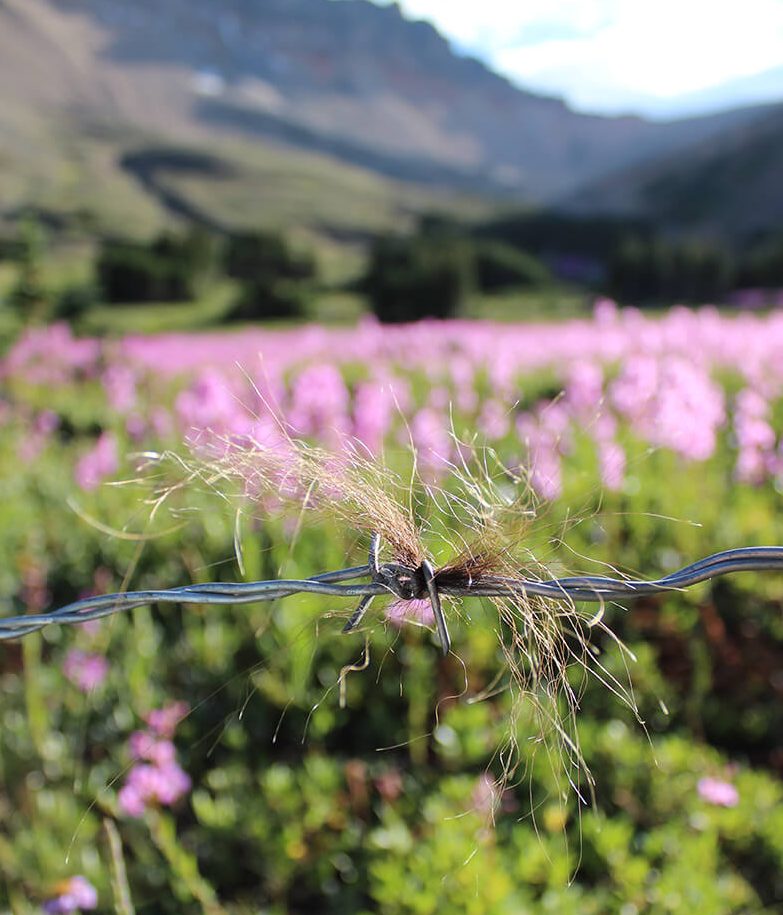
The barbed wire snag method—used widely around the world but in this case by Jasper National Park and fRI Research staff—allows scientists to identify individual animals without putting them through the stress of capture and collaring.
Smell ya later
The key to obtaining a decent bear hair sample size was ensuring that the bears actually stepped over the barbed wire. To lure the bears in, researchers strung up a strand of wire around a potent potpourri: rotten cow’s blood, mixed with canola oil, dumped over a musky tangle of bush and brush. In their haste to investigate these odorous attractants, bears would inadvertently leave behind tufts of hair on the wire.
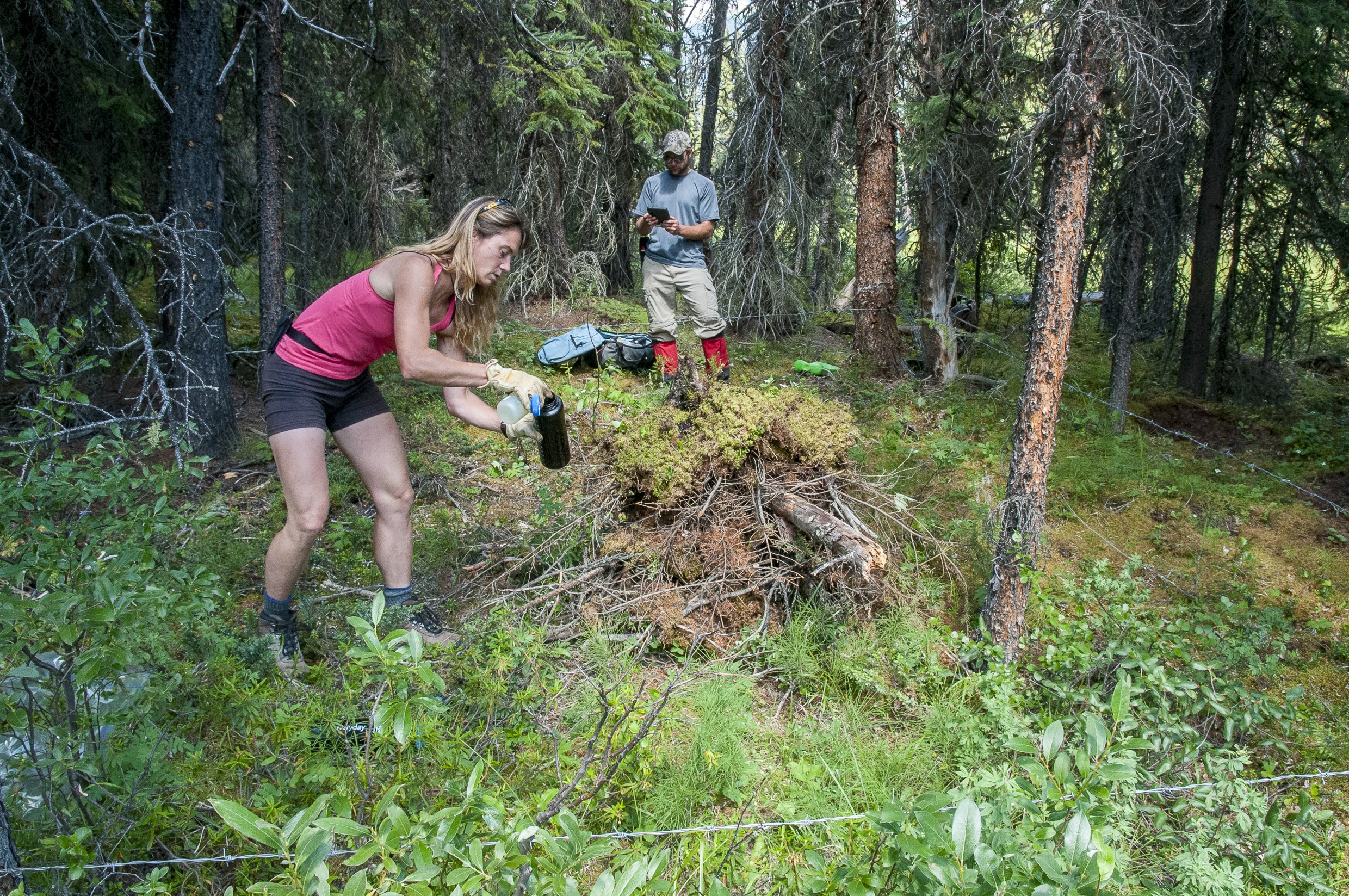
To crunch the collected data the bear hair was sent off to a genetics lab for analysis. Long, nerdy story short, researchers were left with a grid of locations across the landscape, a kind of record of which bears went where. Then, a computer program analyzed the visits made by each bear and spit out a map of how bear density varied across the landscape. This density could be related to habitat features (from satellite imagery) to show which kind of habitat the bears preferred.

Location, location,
Back in the valley last July, the mother grizzly continued her amble through Jasper’s valley bottom. Soon the trio were in the popular visitor day use area, The Valley of the Five Lakes. The grizzlies were turning over rocks and logs for insects, digging out ant larvae and ground squirrels, and keeping an eye out for ripening berries.
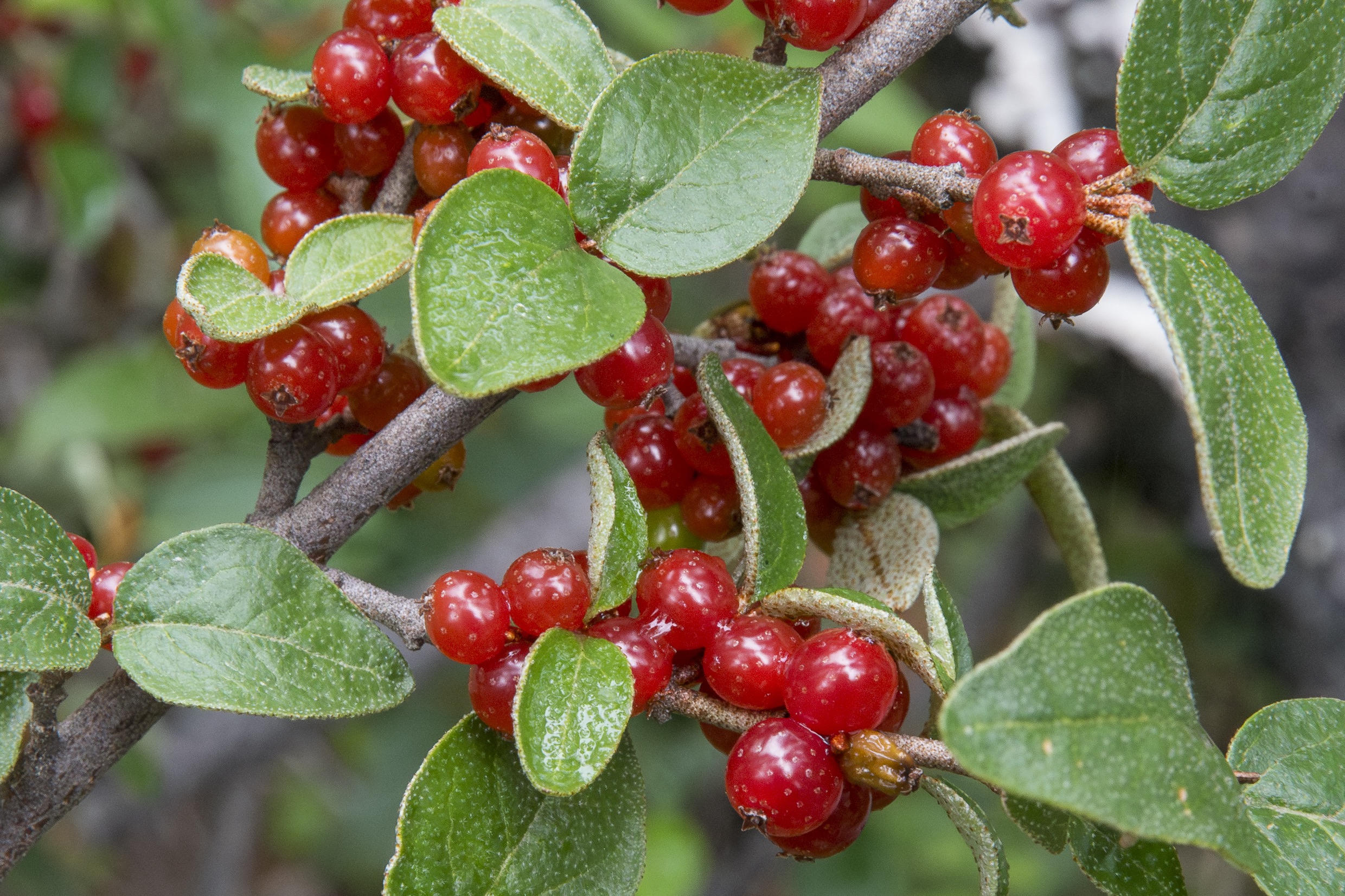
Despite the mother bear’s inclinations, as a general rule, grizzlies prefer the high and open spaces, while black bears prefer low and forested. This was confirmed by the hair snagging study—it showed grizzly bears prefer to be further from roads, at higher elevation in the subalpine – landscape which was about 30 percent treed. Black bears, on the other hand, were more likely to be closer to roads, among the valley bottom’s thick forests.
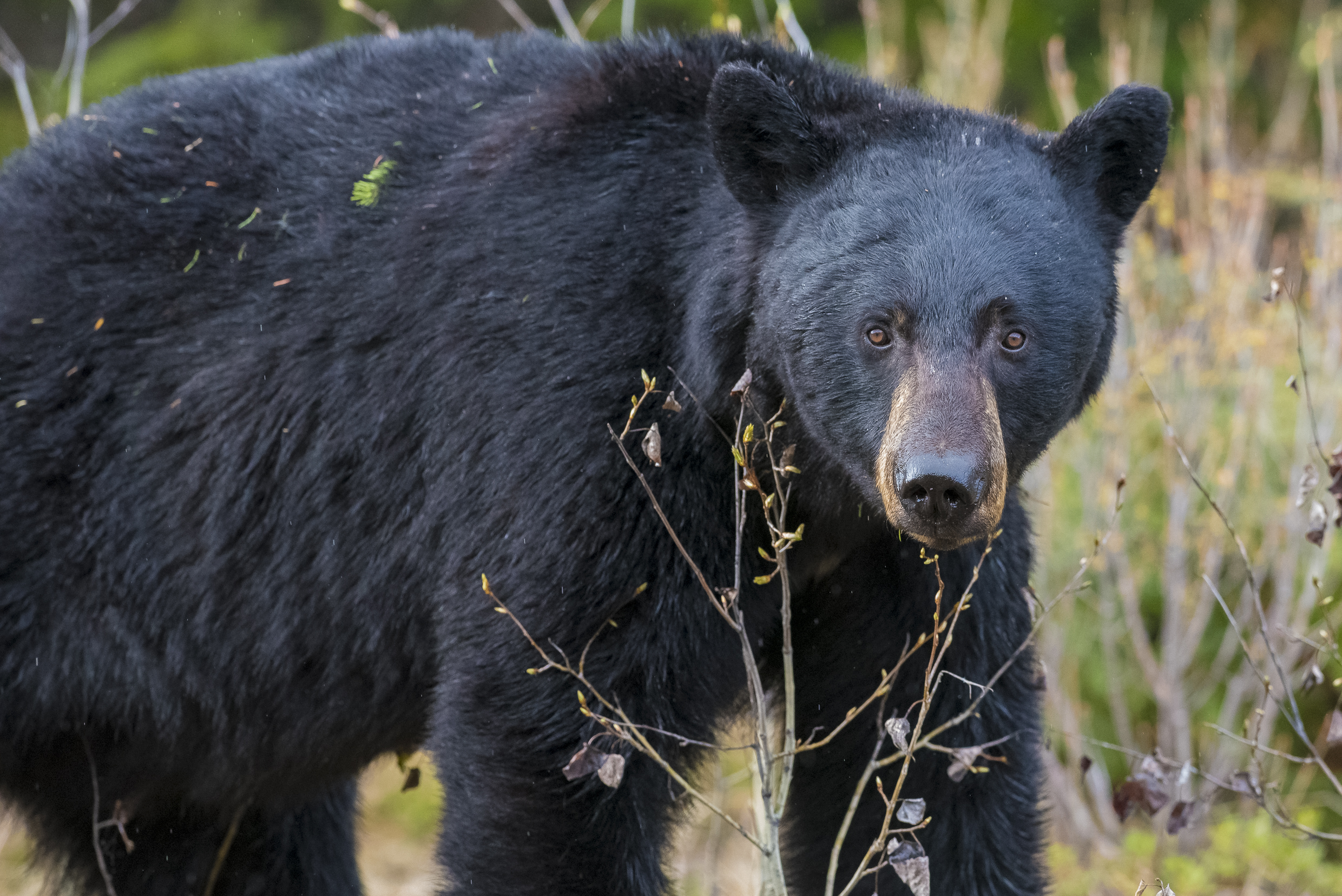
Perhaps by staying lower down and sticking closer to roads, mother grizzly was keeping her cubs safe from those ill-intentioned males.
Suddenly, mother bear caught a whiff of a new danger: smoke. Although she’d encountered smoke plenty of times in her lifetime, as the morning wore on, the smell intensified and the wind started to pick up. When flames were erupting into the treetops, the grizzly rounded up her cubs and ran.

From her radio collar, downloaded weeks later, JNP biologists could see that she and the cubs waited out Jasper’s intense forest fire in a muddy hollow along the Athabasca River. How did she know what to do? We’ll never know for sure, but what we do know is that after the fire died down, she took her cubs to her old stomping grounds, of sorts, the Jasper Park Golf Course. There she spent a few days before heading to the high country of the Maligne Valley for the remainder of the summer.
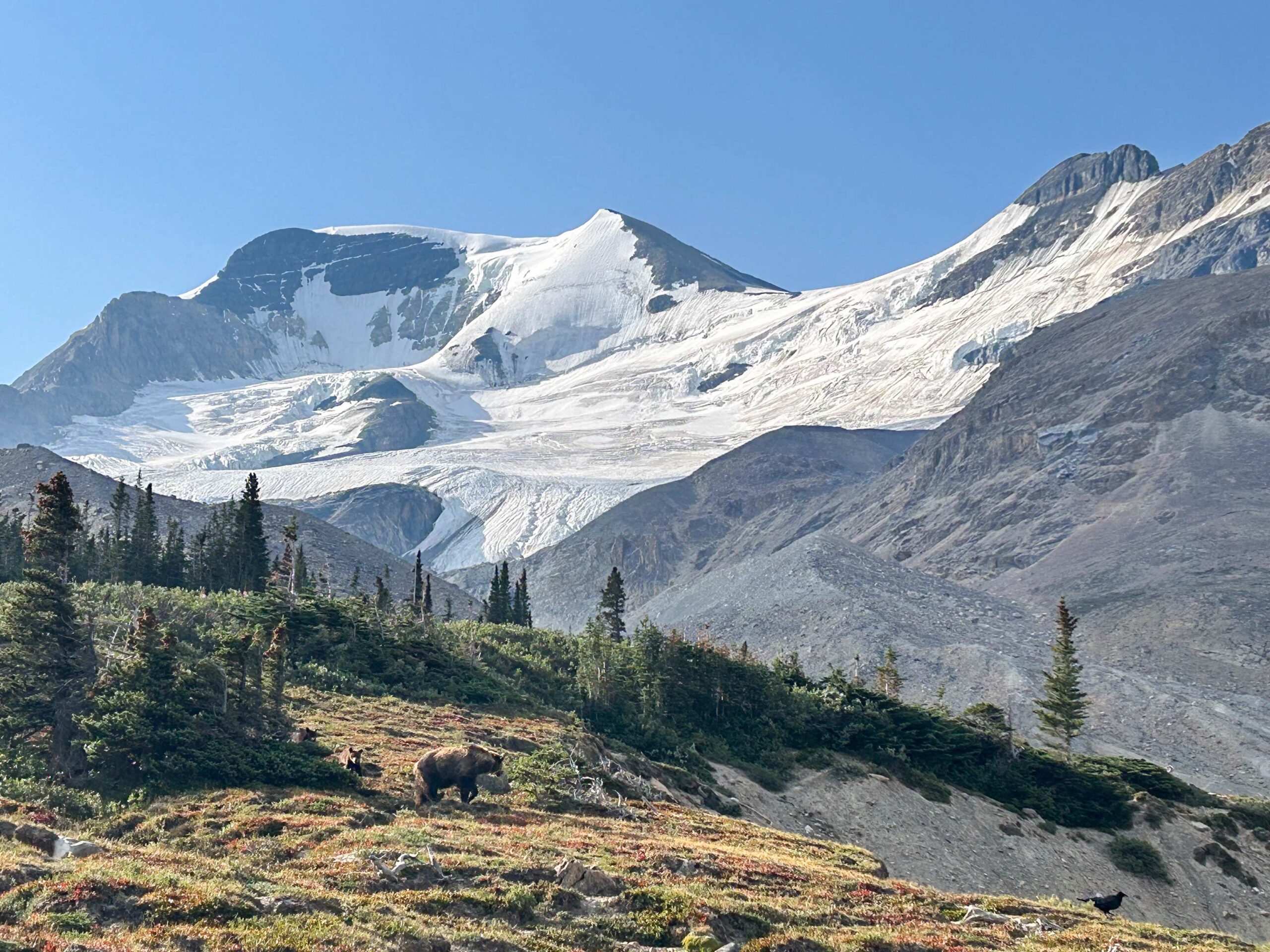
If you hadn’t guessed already, this was Bear 222, who had been radio-collared in 2023 for her alarming tendency to wander too close to people. Thanks to her radio collar, and JNP’s sharing of the data it has collected, The Jasper Local and other media outlets have been introducing readers to her amazing life story over several fascinating episodes.
The radio collar data, exciting as it is, is on a different temporal scale than that gleaned from the hair study. While the 2014 hair study described in general terms where many bears spent their summer, collar data tells scientists exactly where a particular bear is, several times per day.
Facing the future
Fall was now approaching, and Bear 222 and her cubs had started the search for a den where they could snooze away the winter months. She did not venture into the burnt forest again, and stayed up high, away from roads (mostly), just as the hair study predicted for grizzly bears.
Whereas the hair study only covered the summer months, the collar data is year-round. But much of Bear 222’s home range looks quite different, post-wildfire. Sunlight, which couldn’t penetrate the thick canopy before July 2024, can now reach the ground. That will likely result in more food in the form of tasty dandelions, roots and berries, especially in the valley bottom. It is also a good bet that deer, elk and moose will take advantage of the new vegetation and their youngsters could be another item on the bear menu.
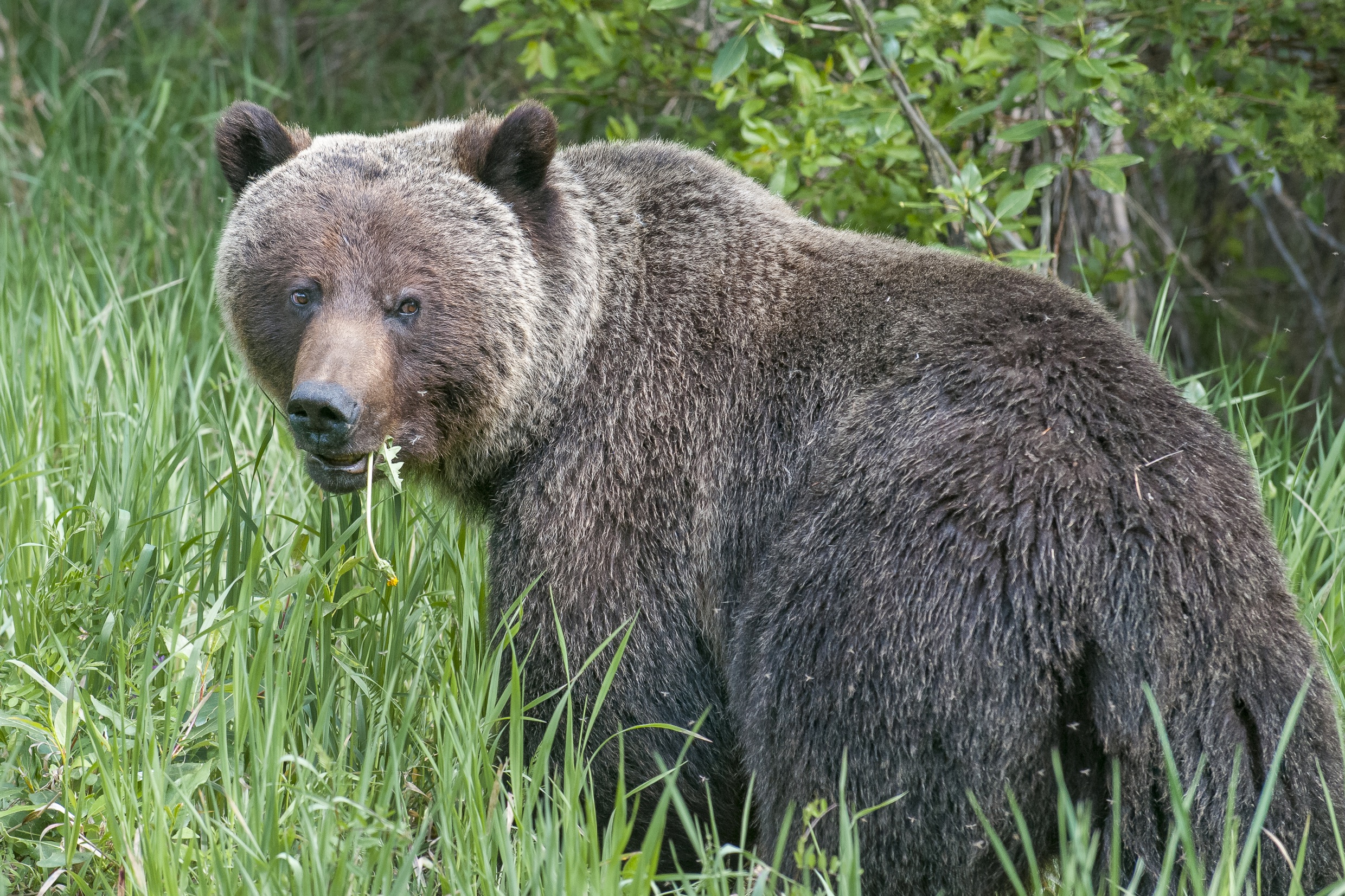
All of this could persuade Jasper’s grizzly bears to spend more quality time at lower elevations. And what about the black bears? The hair study told us that they prefer dense forests…perhaps they will move away from the burnt area?
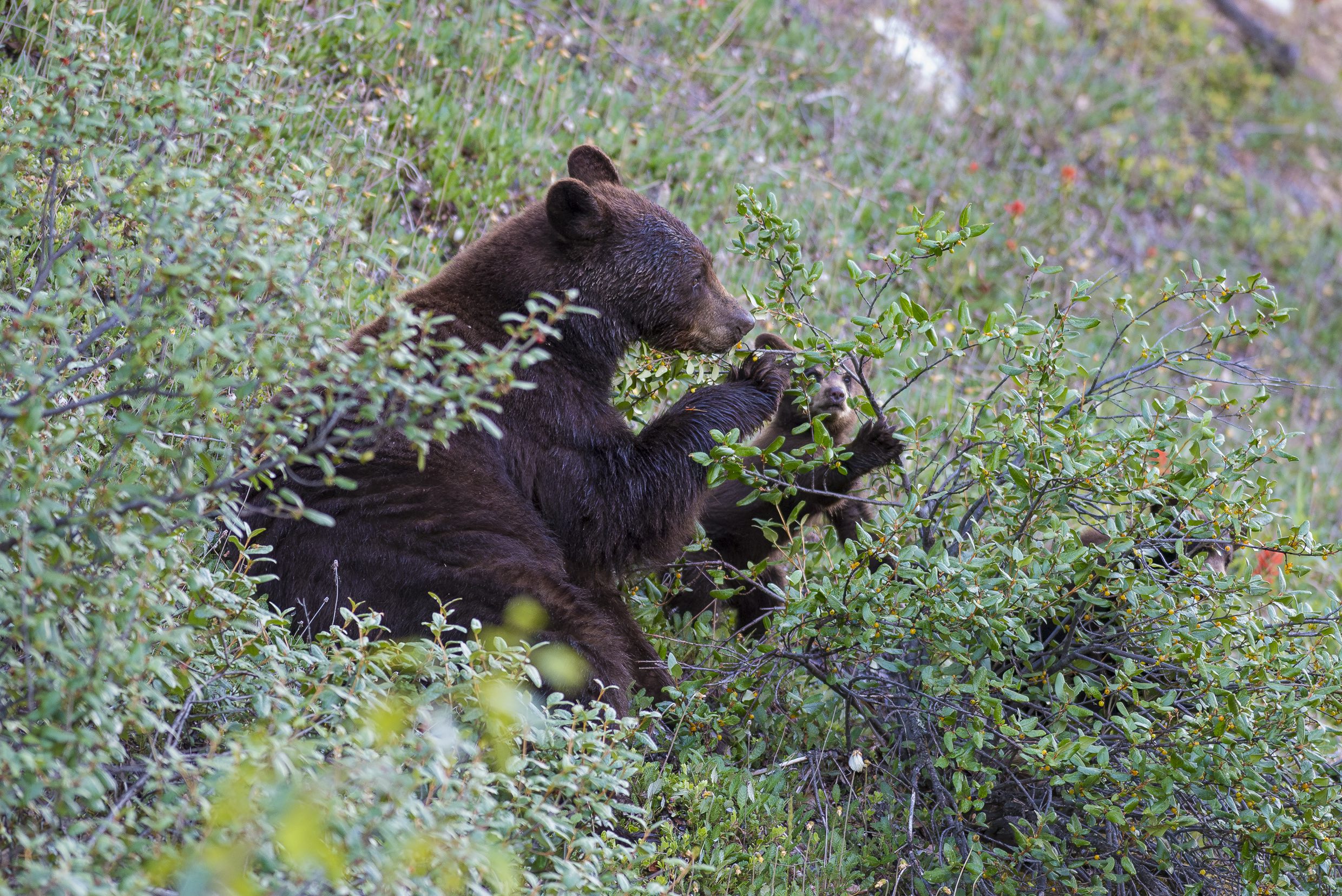
On the other hand, the bounty of bear food that will likely be found in the valley bottom may entice both species to adapt their ways. It would not be a shock if one, or maybe both, species numbers’ increase. I, for one, would not be surprised if they moved closer to roads and people in response to this profound change to their world. That means continuing to manage attractants like garbage, fruit trees and berry bushes will be even more important.
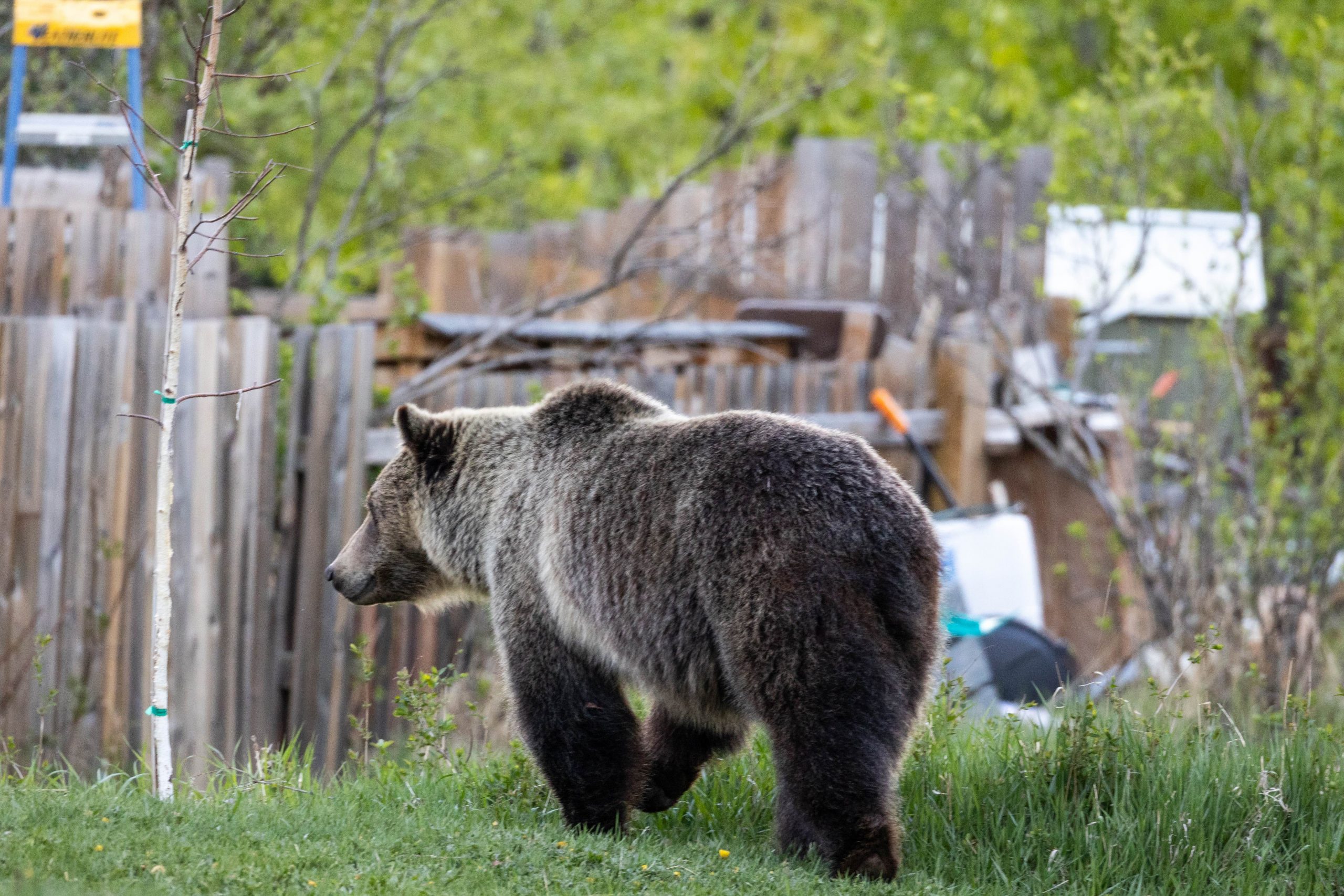
The fall air was cold and clear as the mother bear and her cubs climbed the Bald Hills. The snow that had already begun to accumulate in the high country crunched beneath their feet, and the bears knew that they’d need to den up soon. They had investigated a few winter den sites, but were still doing their best to pack on a few pounds before winter set in.
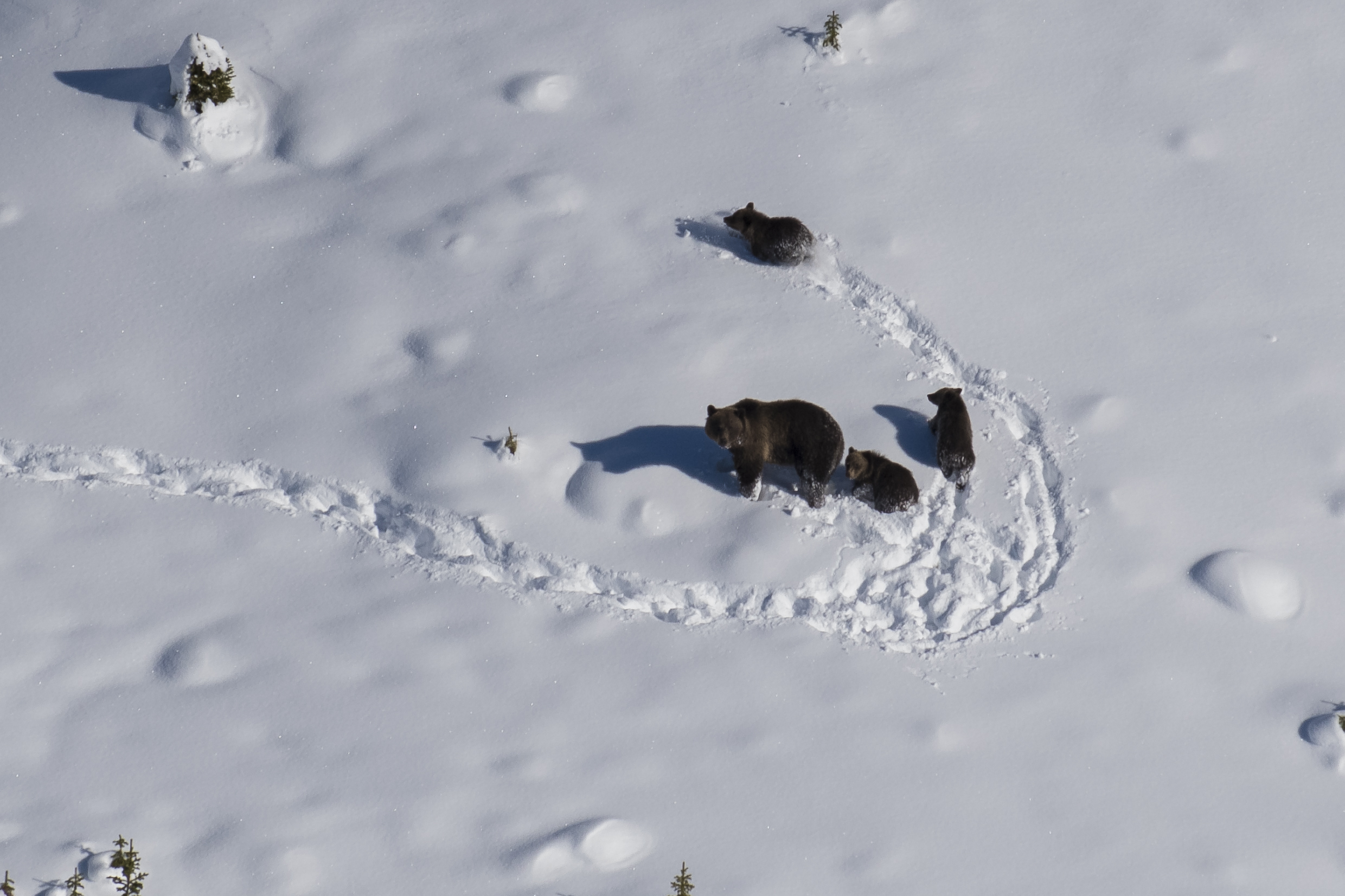
As evening fell, the bears looked west over the main valley and gazed over a landscape that bore little resemblance to the world they previously knew.
Mark Bradley // info@thejasperlocal.com


